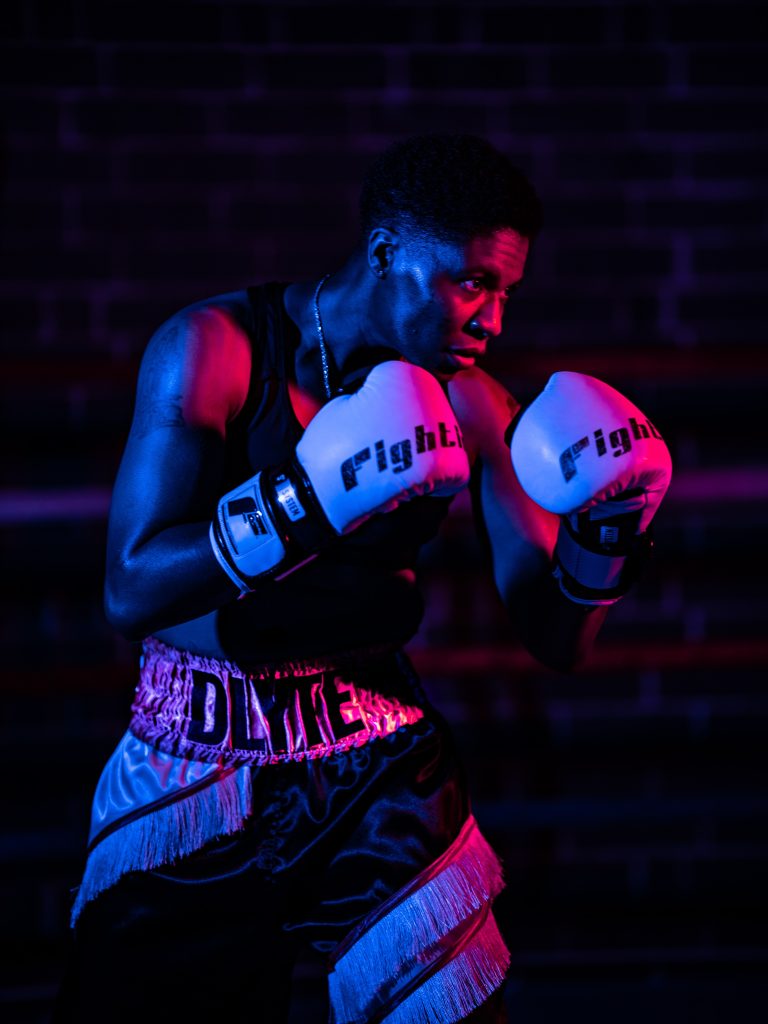How Many Belts are there in Karate and What is the Order?
Karate is one of the most popular martial art forms in the world. It is not only a great way to stay fit but also helps in developing focus, discipline, and respect. One of the most important aspects of Karate is its belt system, which helps to track the progress of a student through various levels of proficiency. In this blog post, we will discuss how many belts are there in Karate and what is the order in which they are arranged.
History of Karate Belt System
The modern Karate belt system is said to have originated from Judo, which is another martial art form. The founder of Judo, Jigoro Kano, introduced the colored belt system in the late 19th century. Initially, the Judo belt system had only two colors, white and black. However, as the art became more popular, Kano introduced more colors to differentiate between different skill levels.
In the early 20th century, Gichin Funakoshi, the founder of Shotokan Karate, adopted the colored belt system for Karate. He introduced the white, yellow, green, brown, and black belts, which are still used in many Karate styles today.
How Many Belts are There in Karate?
There are typically ten colored belts in Karate, starting with white and progressing through yellow, orange, green, blue, purple, brown, red, red and black, and finally, black. Each colored belt has a specific set of requirements that must be met before a student can progress to the next level.
In addition to the colored belts, there is also a separate set of degrees for black belts, which indicate the level of proficiency achieved by the student. The degrees are denoted by a series of stripes or bars on the black belt.
What is the Order of the Belts in Karate?
The order of belts in Karate starts with the white belt, which is the beginner level. The white belt signifies purity and innocence, as the student is just beginning their journey in the martial art.
White Belt
The white belt is followed by the yellow belt, which signifies the first ray of sunlight that illuminates the darkness. The yellow belt is a sign that the student has started to develop a core set of techniques.
Yellow Belt
After obtaining the yellow belt, the student progresses to the orange belt, which signifies the winding path one must take to reach the top. At this stage, students start to develop more advanced techniques and understand the importance of dedication and hard work.
Orange Belt
The green belt follows the orange belt and represents growth and development. Green belt students have developed a solid foundation of fundamentals and are beginning to build on this foundation with more advanced techniques.
Green Belt
The blue belt comes after the green belt and signifies the ocean, which is vast and limitless. Blue belt students have developed a sense of calm and focus and are starting to explore the depth of their knowledge.
Blue Belt
The purple belt is next in line and signifies the coming of dawn after a long night. Purple belt students have dedicated many hours to their training and are beginning to see the fruits of their labor.
Purple Belt
The brown belt is the second to last colored belt and represents the ripening of knowledge. Brown belt students have developed an advanced set of techniques and are preparing for the final push towards their black belt.
Brown Belt
The red belt is the final colored belt and signifies danger. At this stage, students are expected to have a high level of proficiency and knowledge in Karate, and are preparing to take the final step towards their black belt.
Red Belt
Finally, after years of dedication and hard work, a student is awarded their black belt. The black belt symbolizes knowledge, experience, and proficiency. It is the highest rank that a student can achieve in Karate.
How Many Belts Are There in Karate in Order?
Introduction
Karate is a traditional martial art that is practiced all over the world, and it is known for its strict discipline and focus on physical and mental development. One of the most important aspects of karate is the ranking system, which is based on a series of colored belts that represent different levels of expertise and knowledge. The number of belts in karate varies depending on the style and the organization, but in this blog post, we will discuss the most common ranking system and answer some of the most frequently asked questions about the number of belts in karate in order.
How Many Belts Are There in Karate in Order?
The most common ranking system in karate is the Kyu/Dan system, which consists of ten Kyu (colored belt) ranks and ten Dan (black belt) ranks. In this system, students start with a white belt and progress through different colors until they reach the black belt, which is the highest achievable rank in karate. The order of the belts in karate is as follows:
1. White Belt
2. Yellow Belt
3. Orange Belt
4. Green Belt
5. Blue Belt
6. Purple Belt
7. Brown Belt (1st Kyu)
8. Brown Belt (2nd Kyu)
9. Brown Belt (3rd Kyu)
10. Brown Belt (4th Kyu)
11. Black Belt (1st Dan)
12. Black Belt (2nd Dan)
13. Black Belt (3rd Dan)
14. Black Belt (4th Dan)
15. Black Belt (5th Dan)
16. Black Belt (6th Dan)
17. Black Belt (7th Dan)
18. Black Belt (8th Dan)
19. Black Belt (9th Dan)
20. Black Belt (10th Dan)
FAQs
1. How long does it take to get a black belt in karate?
The amount of time it takes to get a black belt in karate varies depending on the individual, their dedication, and the style of karate they practice. On average, it takes about 3-5 years of consistent practice to earn a black belt in karate.
2. Can I skip belts in karate?
It is not common to skip belts in karate, as each belt represents a level of mastery and knowledge that is required to progress to the next level. However, in some cases, a student may be allowed to skip a belt if they show exceptional talent and dedication, and their instructor deems them ready for the next level.
3. What is the highest achievable rank in karate?
The highest achievable rank in karate is the 10th Dan black belt. This rank is only reached by a small number of elite martial artists who have dedicated their lives to the practice and teaching of karate.
4. What are the benefits of achieving a black belt in karate?
Achieving a black belt in karate is a significant accomplishment that represents years of hard work, dedication, and discipline. It demonstrates a high level of physical and mental ability and a deep understanding of karate principles and techniques. Black belt holders are respected members of the martial arts community and often go on to become instructors and mentors to others.
5. What happens after I earn my black belt in karate?
Earning a black belt in karate is not the end of the journey, but rather the beginning of a new chapter. After achieving a black belt, students continue to train and refine their skills, and many go on to earn higher Dan ranks and become instructors and leaders in their martial arts community.
Introduction
Karate is a martial art that originated in Okinawa, Japan, and has gained widespread popularity all over the world. Karate is not only a means of self-defense but also a way of life for its practitioners. One of the most distinguishing features of karate is the system of colored belts, which signify a student’s rank and progress in the art.
In this blog post, we will answer the question: „How many belts are there in karate and what is the order in which they are ranked?“ We will also discuss the significance of the different colors and what they represent.
The Belt Ranking System in Karate
The belt ranking system in karate is a way of marking the progress of a student in the art. Each belt color symbolizes a particular level of proficiency, and each level represents an increase in knowledge, skill, and experience. The belt system helps students set personal goals and work towards achieving them.
The belt ranking system in karate typically includes the following colors, listed in order from lowest to highest rank:
White Belt
The white belt is the starting rank in karate. It signifies a beginner who is just starting to learn the basics of the art. White is associated with purity and innocence, and in karate, it represents a clean slate, a blank canvas on which to begin the journey of learning this martial art.
Yellow Belt
The yellow belt is the second rank in karate. It represents the sun, which is rising and gaining strength. Students who have earned a yellow belt have demonstrated an understanding of the basic techniques and principles of karate.
Orange Belt
The orange belt is the third rank in karate. It represents the warmth of the sun as it rises even higher. Students who have earned an orange belt have demonstrated an increased level of proficiency and knowledge of the art.
Green Belt
The green belt is the fourth rank in karate. It represents the growth of the plant as it reaches towards the sun. Students who have earned a green belt have demonstrated a high level of proficiency and knowledge of the art.
Blue Belt
The blue belt is the fifth rank in karate. It represents the sky, which is now high and vast. Students who have earned a blue belt have demonstrated a deep understanding of the art and are well on their way to mastery.
Purple Belt
The purple belt is the sixth rank in karate. It represents the beginning of the transition from darkness to light. Students who have earned a purple belt have demonstrated exceptional skill and knowledge of the art.
Brown Belt
The brown belt is the seventh rank in karate. It represents the earth, which is now firm and stable. Students who have earned a brown belt have demonstrated a high level of skill and knowledge of the art.
Black Belt
The black belt is the highest rank in karate. It represents the void, which is full of potential and the unknown. Students who have earned a black belt have demonstrated exceptional mastery of the art, both in technique and in the philosophy and principles that underlie it.
The Significance of Belt Colors in Karate
Each belt color in karate represents a particular level of progress and achievement. The colors also have symbolic significance, representing different elements of the student’s journey towards mastery.
White represents purity, innocence, and a beginner’s mind. As students progress through the ranks, they must continue to maintain this purity of intention and a willingness to learn.
Yellow represents the rising sun and the growth of knowledge and experience. Students who have earned a yellow belt are beginning to gain a deeper understanding of the art of karate.
Orange represents the warmth of the sun and the increasing confidence and accomplishment of the student. Students who have earned an orange belt are becoming more proficient in the art and are gaining a greater sense of self-confidence.
Green represents the growth of the plant as it reaches towards the sun. Students who have earned a green belt are maturing in their practice of karate and are beginning to see the benefits of their hard work and dedication.
Blue represents the vast sky and the limitless potential of the student. Students who have earned a blue belt are developing a deep understanding of the art and are beginning to see the interconnectedness of all things.
Purple represents the transition from darkness to light, and the student’s growing mastery of the art. Students who have earned a purple belt are beginning to see their practice of karate as a way of life.
Brown represents the earth, which is now firm and stable, representing the student’s growing expertise and mastery of the art.
Black represents the void and the unknown, representing the endless possibilities that await the karate student who has truly mastered the art.
Conclusion
The belt ranking system in karate is a way of marking the progress of the student and helps to set personal goals and work towards achieving them. Each belt color represents a different level of proficiency and accomplishment and has symbolic significance, representing different elements of the student’s journey towards mastery. By understanding the significance of each belt color, karate students can gain a greater appreciation of the art and deepen their practice.
Inhaltsverzeichnis






